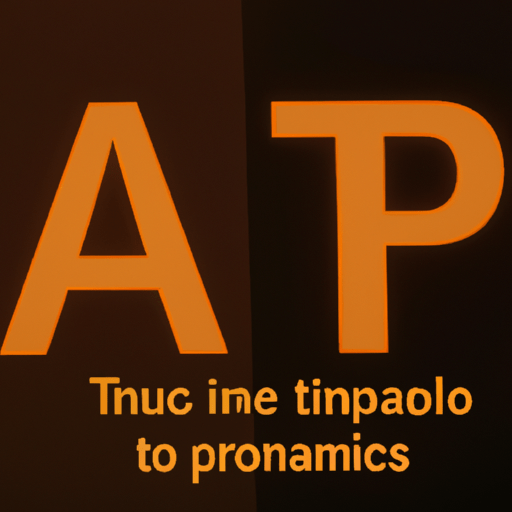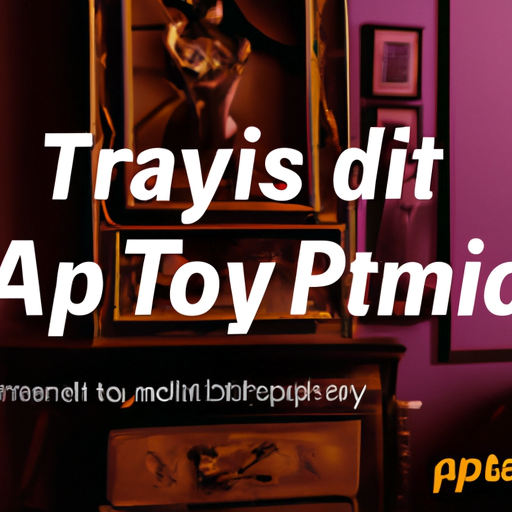
-
Table of Contents
- Typography in Motion Graphics: Tips for Dynamic Text Animation
- The Power of Typography in Motion Graphics
- Key Principles for Dynamic Text Animation
- 1. Readability is paramount
- 2. Use contrast to create impact
- 3. Align text strategically
- 4. Consider the pacing and timing
- 5. Maintain consistency
- Case Studies: Successful Typography in Motion Graphics
- 1. Nike “Unlimited You”
- 2. Google “Year in Search”
- Conclusion
Typography in Motion Graphics: Tips for Dynamic Text Animation

Typography plays a crucial role in motion graphics, as it helps convey messages, evoke emotions, and enhance the overall visual experience. When used effectively, dynamic text animation can captivate viewers and make a lasting impact. In this article, we will explore some valuable tips and techniques for creating compelling typography in motion graphics.
The Power of Typography in Motion Graphics
Typography is more than just selecting a font and arranging letters on a screen. It is an art form that can communicate ideas, set the tone, and guide the viewer’s attention. In motion graphics, typography takes on an even more significant role, as it becomes an integral part of the storytelling process.
When used creatively, typography can:
- Enhance the narrative: Dynamic text animation can help reinforce the message and story being told in a motion graphic. By using appropriate fonts, colors, and motion, designers can create a cohesive visual language that complements the overall theme.
- Evoke emotions: Different fonts and animations can evoke specific emotions in viewers. For example, bold and uppercase letters may convey strength and power, while cursive fonts can evoke elegance and sophistication. By carefully selecting typography elements, designers can elicit the desired emotional response from the audience.
- Guide the viewer’s attention: Motion graphics often involve multiple elements moving simultaneously on the screen. Typography can be used strategically to guide the viewer’s focus and ensure important information is not overlooked. By animating text in a way that stands out, designers can direct the viewer’s gaze and emphasize key points.
Key Principles for Dynamic Text Animation
Creating effective typography in motion graphics requires a deep understanding of design principles and techniques. Here are some key principles to keep in mind:
1. Readability is paramount
No matter how visually appealing a motion graphic is, if the text is difficult to read, the message will be lost. Ensure that the chosen font is legible and appropriate for the context. Avoid using overly decorative or complex fonts that may hinder readability, especially when the text is in motion.
2. Use contrast to create impact
Contrast is a powerful tool in typography. By using contrasting colors, sizes, and weights, designers can create visual interest and make the text stand out. For example, pairing a bold headline with a lighter body text can create a clear hierarchy and draw attention to the main message.
3. Align text strategically
Proper alignment is essential for maintaining visual harmony and readability. Aligning text elements to a grid or other design elements can create a sense of order and professionalism. Experiment with different alignment options, such as left, right, center, or justified, to find the most suitable arrangement for the motion graphic.
4. Consider the pacing and timing
In motion graphics, timing is everything. The speed and timing of text animations should be carefully considered to ensure they align with the overall rhythm and flow of the motion graphic. Fast-paced animations may create a sense of urgency or excitement, while slower animations can convey a more relaxed or contemplative mood.
5. Maintain consistency
Consistency is key to creating a cohesive and professional-looking motion graphic. Use consistent typography throughout the entire animation to maintain visual harmony. This includes using the same font family, sizes, and styles for related text elements. Consistency also extends to the animation itself, ensuring that similar text elements have similar motion behaviors.
Case Studies: Successful Typography in Motion Graphics
Let’s take a look at some real-world examples of motion graphics that effectively utilize typography:
1. Nike “Unlimited You”
In Nike’s “Unlimited You” campaign, typography plays a central role in conveying the message of pushing one’s limits. The motion graphic features bold, uppercase text that dynamically animates to create a sense of energy and movement. The typography is synchronized with the visuals, reinforcing the narrative and inspiring viewers to strive for greatness.
2. Google “Year in Search”
Google’s “Year in Search” motion graphics are known for their powerful storytelling and emotional impact. Typography is used strategically to highlight key search terms and evoke empathy. The animations are carefully timed to create a rhythm that enhances the viewer’s engagement and emotional connection with the content.
Conclusion
Typography in motion graphics is a powerful tool for conveying messages, evoking emotions, and guiding the viewer’s attention. By following key principles such as readability, contrast, strategic alignment, pacing, and consistency, designers can create compelling and impactful typography animations. Remember to experiment, iterate, and seek inspiration from successful case studies to continuously improve your skills in this dynamic field. With the right techniques and a creative mindset, typography can elevate your motion graphics to new heights.
